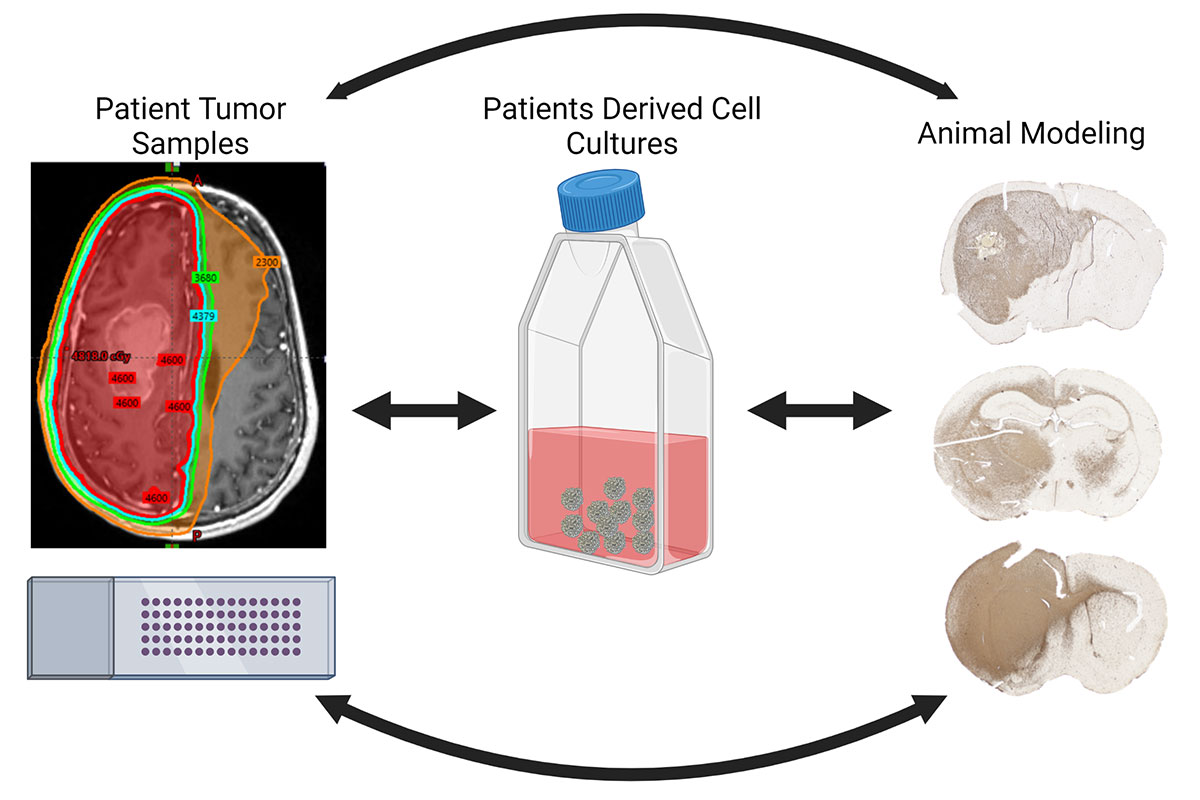The Pointer lab focuses on translational and preclinical approaches to overcome radiation resistance and toxicity. Between half and two thirds of patients will receive radiation therapy during their cancer treatment. While radiation therapy is curative in many cases, radiation can paradoxically cause tumor resistance and can also cause harm. The Pointer lab is interested in understanding the mechanisms behind radiation resistance and developing ways to overcome this resistance, as well as ways to improve patient quality of life after radiation therapy.

Current Focuses
Cancer Stem Cells in Glioblastoma
Glioblastoma (GBM) is a grade IV astrocytoma and is the most malignant primary brain tumor. Despite surgery, radiation and chemotherapy, patients still have a poor prognosis with a median survival of less than two years. The poor outcomes seen in patients with GBM is largely due to the fact that most GBMs recur and the tumor recurrence often occurs within the radiation treatment field.
Cancer stem cell (CSC) resistance has been proposed as a hypothesis for GBM resistance. GBM CSC (GSCs) have the ability to self-renew, de-differentiate into various cell lineages, and promote tumorigenesis. Research has suggested that this sub-population of cells may be resistant to standard therapies and, thus, drives tumor recurrence. GSCs are a subpopulation of tumor cells that have plasticity and potentially have the ability to turn on and off their stem-like states, shifting back and forth from less aggressive states to more aggressive resistant states.
While radiation therapy can be curative, cancer cell resistance and tumor regrowth remain a problem during radiation therapy and radiation therapy can paradoxically cause selective pressures that shift GBM cells to more resistance stem-like states. Our lab is working on identifying and characterizing a gene signature for the subpopulation of cells that drive tumorigenesis in GBM after radiation exposure as well as identifying novel ways to target these resistant cells in order to overcome radiation resistance.
Decreasing Radiation Toxicity
Radiation therapy is used as part of the standard of care for a large number of brain tumors. During radiation treatment, normal brain tissue can be damaged. Long term consequences of radiation damage to the brain can include, but are not limited to, memory deficits, seizures, sleep disturbances, and necrosis. Patients cured of their disease can be left with long term consequences from treatment. Therapies, such as memantine, in patients who have received whole brain radiation therapy have demonstrated some protection against memory loss after radiation therapy; however, there are still a large number of short and long term side effects that patients experience. Our lab is researching ways that can help minimize the toxicity of radiation therapy to the brain in hopes of improving the quality of life for patients who receive radiation therapy.
Clinical Projects
The Pointer lab also translates preclinical findings to early phase clinical research projects to improve cancer patient treatments. Using tissue samples and correlating biomarkers in these studies helps to drive the preclinical research toward avenues that will have the greatest clinical impact.